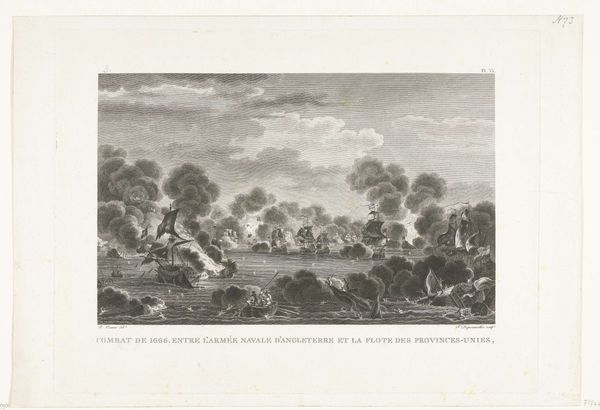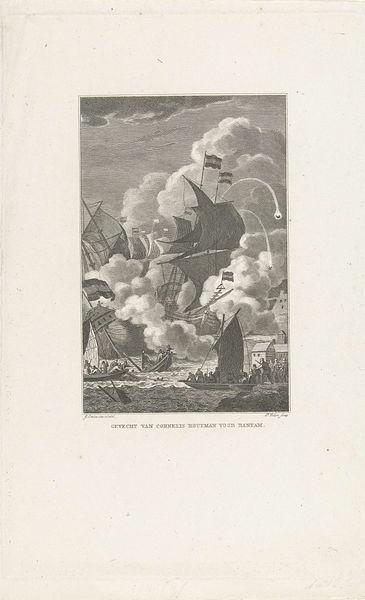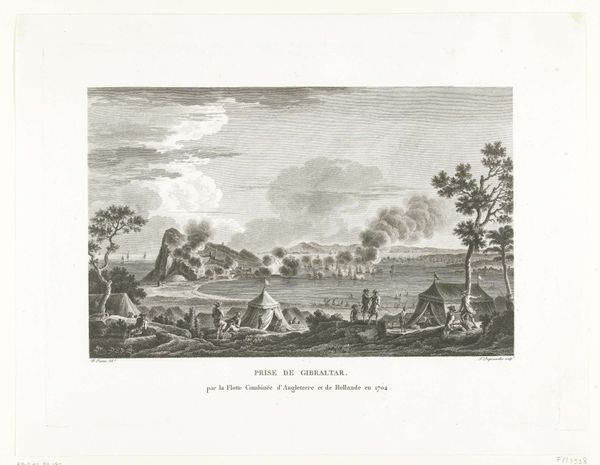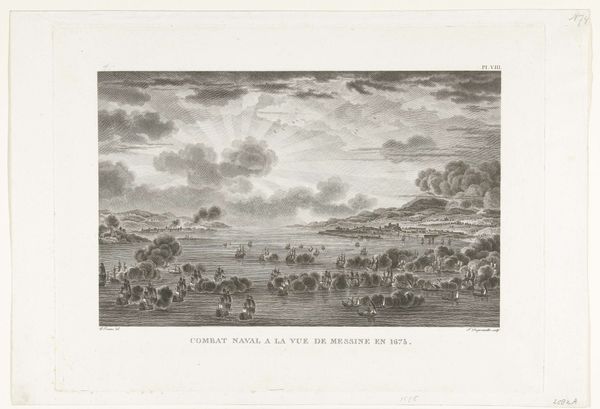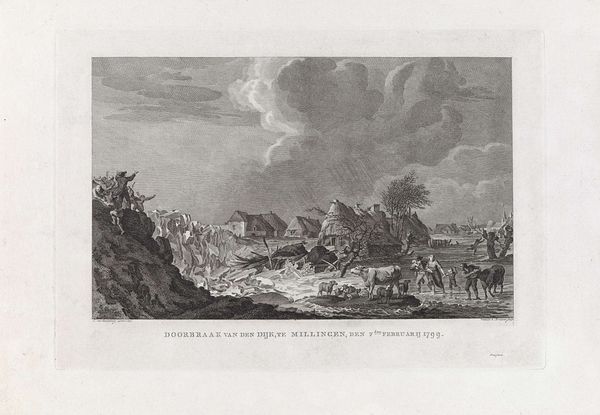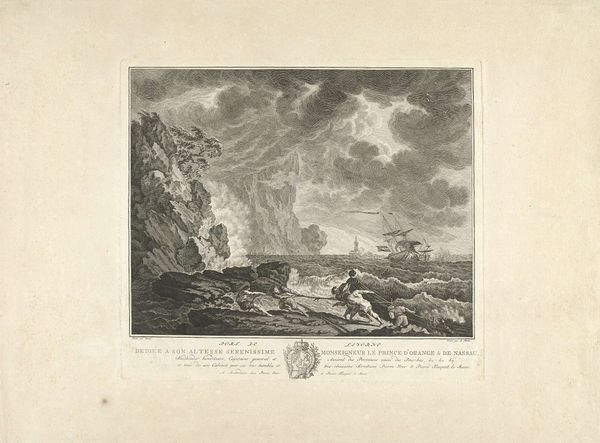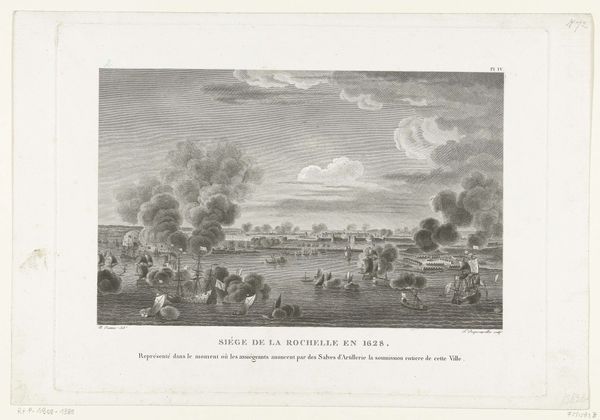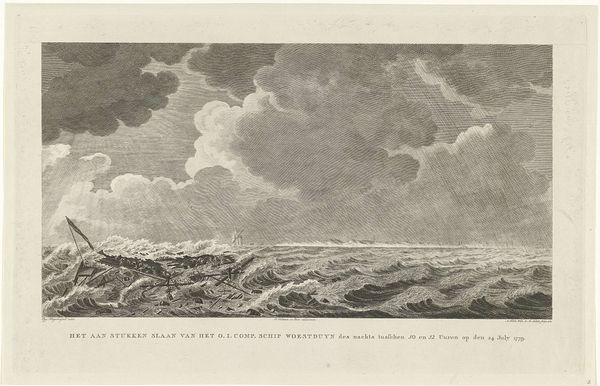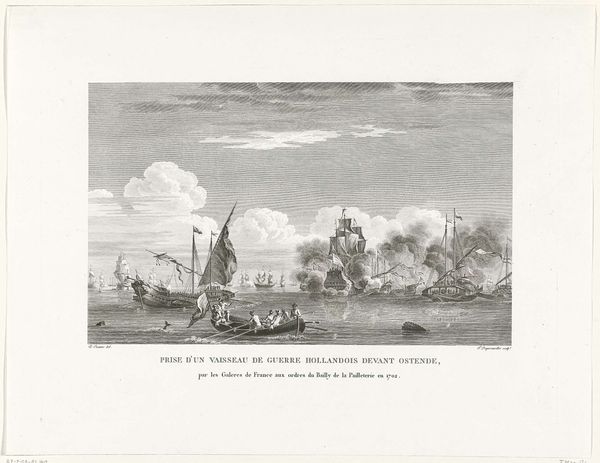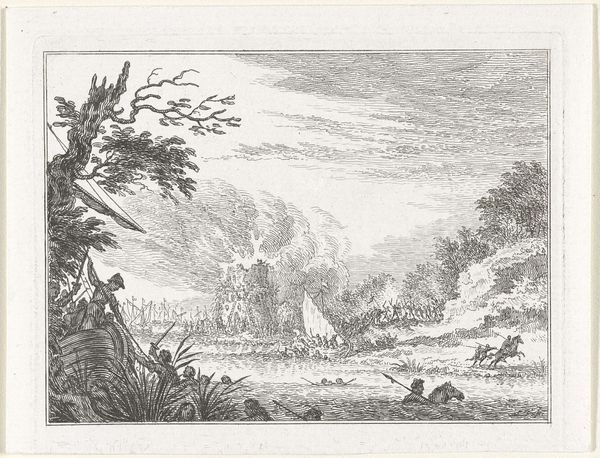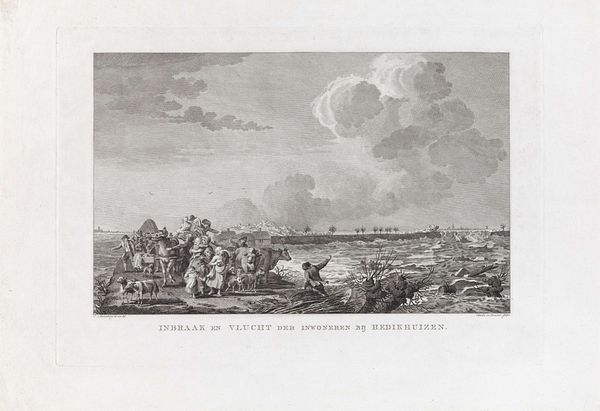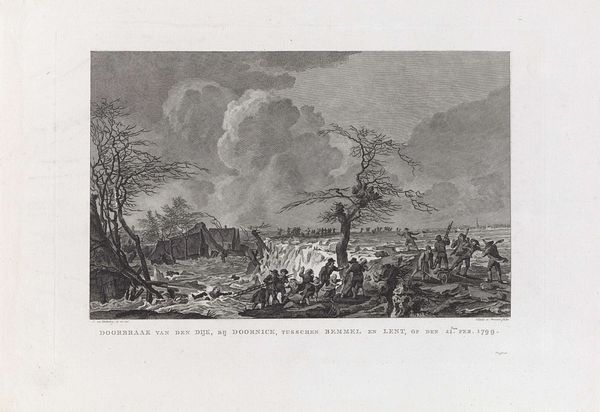
Verovering van de Spaanse Zilvervloot in de baai van Vigo, 1702 1755 - 1811
0:00
0:00
Dimensions: height 298 mm, width 395 mm
Copyright: Rijks Museum: Open Domain
This engraving by François Jacques Dequevauviller depicts the battle of Vigo Bay in 1702, a key moment in the War of the Spanish Succession. Produced decades after the event, it reflects a vision of maritime conflict and colonial power. What does it mean to represent a battle so far removed from the actual event? The print romanticizes warfare, focusing on the grand scale of ships and billowing smoke, while the human cost is notably absent. This distance is not merely temporal but also ideological, as the print serves to reinforce national pride and legitimize colonial expansion. Consider the economic implications: the "silver fleet" represents not just wealth but the exploitation of resources and labor in the Americas. Dequevauviller presents a singular narrative of European dominance, silencing the voices and experiences of those whose lives were most affected by this clash of empires. The lack of their representation speaks volumes about the power dynamics at play.
Comments
No comments
Be the first to comment and join the conversation on the ultimate creative platform.
